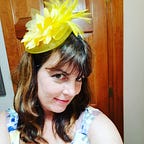The Things That Will Not Save Us
Masks and vaccines will not get us out of this pandemic.
--
On this date one year ago, COVID-19 had already been spreading like wildfire in my community, and none of us saw it.
I live in Kirkland, Washington. The first person in the United States diagnosed with COVID-19 lives one county to the north. The first officially reported death in the United States occurred at the hospital five miles from my house. During the 39 days between those two milestones, the virus made its way south, an invisible hitchhiker passing through the places where my family and I regularly ate, shopped, and worked. My skin crawls a little bit when I think about it now.
Within a couple of weeks, school and workplaces had closed, authorities had issued stay-at-home orders, and we thought that we’d have to endure this for a few weeks, maybe a month or at most two. And yet, almost a year later, we’re still in this hideous mess. Nearly half a million people in the United States alone have been killed. The numbers of cases and fatalities climb every day.
A sickness that spreads through close contact could, in theory, be reined in if people took the right measures. We’ve been told to wear masks (wear two, now), avoid large groups, and wash hands after interacting with the outside world. We look to vaccines in the hope that they will protect our essential workers, our elderly and at-risk individuals, and eventually ourselves.
These measures will not end the pandemic because there are still too many people who choose to ignore them. We can’t convince those holdouts to change their behavior until we first persuade them to change their beliefs.
Several years ago, I attended a Leadership 101 training by Kirsi Hall, where she told us about the Beliefs-Behavior-Results cycle.
Our beliefs and feelings drive our behavior. Our behavior and actions produce specific results and experiences. Those results influence our beliefs, which affect our behavior, which leads to more results, which… well, you get the picture.
In the case of the pandemic, we have people who believe that preventative measures are unnecessary, pointless, or dumb. Based on those feelings, they behave in ways that seem reckless: gathering in large groups, refusing to wear masks, sowing doubt about the new vaccines.
Unfortunately, this is where the cycle breaks down. Preventative measures are designed to ensure a particular situation does not happen, which means there are no visible or tangible results to feed into and revise the existing beliefs. As a result, the deniers have no incentive to change their beliefs; as far as they can tell, there’s no clear evidence that the behaviors actually make a difference.
Those of us who are following the safety measures like staying home and washing our hands eleventy billion times a day do so because we think it’s making a difference. We can’t directly prove it though — there’s no way to conclusively say “Because I chose not to attend that party, three people are still alive.” We do know, though, that the more people there are who take preventative measures, the lower the numbers of cases and deaths. If we want to increase the number of mask wearers and social distancers, we have to start at the root: we first need to persuade the holdouts that there are real reasons to take these measures. Only by changing people’s mindsets can we change our shared fate.
When I leave my house in Kirkland these days, everyone I see is wearing a mask. This is different from a lot of places around the country. But then, we’ve had a different experience here than many other places in the country. We saw firsthand what unchecked community spread looked like, because we lived it before a single restriction was laid down. When you realize that you were unknowingly either a victim of the virus, a vector of the spread, or just very lucky to have avoided it, you look at these precautions differently.
